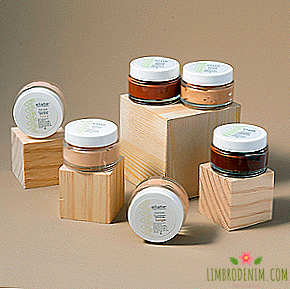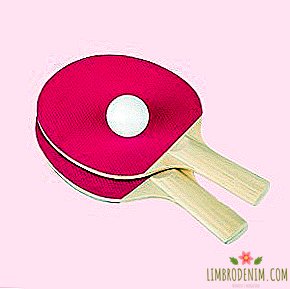Feats Taus: As a superheroine from Dagestan won the Kandinsky Prize
LAST WEEK IN MOSCOW WAS ONE OF THE MAIN THINGSannual events in the field of contemporary art - awarding the Kandinsky Prize winners. In the nomination "Young Artist. Project of the Year" Taus Makhacheva won, more precisely, her alter ego - the Dagestan superheroine Super Taus. Her performance "Untitled 2" is dedicated to invisible everyday feats and criticism of artistic institutions: Super Taus travels from Makhachkala to Moscow, and then to Paris, carrying a monument on his back, which he wants to find a suitable place in the museum. The monument is dedicated to Maria Korkmasova and Khamisat Abdulaeva - to the lookoutkeepers of the Dagestan Museum, who in the early 1990s saved Rodchenko’s painting “Abstract Composition” of 1918, tearing it out of the hands of the robber.
Taus Makhacheva emphasizes that she and the Super Taus are two different women, and the second one won the prize. The real Taus has a lot of awards: the artist won the awards "Innovation" and "The Future of Europe" for her works - studies of Dagestan traditions; She exhibited at the 11th Shanghai Biennale and participated in dozens of international projects. We talked with Taus about her superhero alter ego, life in Dagestan, her family (the artist’s grandfather is a famous Soviet poet and public figure Rasul Gamzatov), edible art and attitude to her own roots.

↑ Rope, 2015
 How do you feel after the Kandinsky Prize?
How do you feel after the Kandinsky Prize?
Actually, it was not me who received the award, but Super Taus, my girlfriend from Dagestan. She appeared when I met the Iranian hero Super Sohrab. He has a slightly different practice: almost everything he does, he fails, he has no superpowers, only a superhero costume. Super Taus, of course, was shocked by the fact that she was given an award: she is not a professional artist and her career (if you can call it a career at all) is very short.
Once she replaced me at the symposium "Where the line is between us" in the Garage Museum, made a presentation there. There is also a video recorded by the DVR in her car, which circulates on the Internet. Of course, she was very happy, said that she would spend the prize money to repair her house in the mountains. He says that all her relatives started calling her, congratulate him. True, for some reason, basically congratulate mom, dad, husband - all. It is now the merit of the kind, I would even say so.
 Why do you need an artist award? What do they mean to you?
Why do you need an artist award? What do they mean to you?
Many artists, especially in the early stages of their careers, do not feel any response to their work. It’s like a black hole: you put your thoughts in, which you can’t even verbalize, hopes, your painful experiences, and the viewer who meets with this does not write to you, doesn’t react at all. It seems to me that the award is an indicator of the reaction to your work. It is clear that this is all subjective, that there are a huge number of worthy artists who did not receive the award: here, Eugene Antufiev did not even enter the short list of the main nomination, although his exhibition in the MMSY, in my opinion, was simply brilliant.
This, of course, is also important from the point of view of the media, financing of the following projects. Award can be given in advance. For example, when I won the Future of Europe award at the Museum of Modern Art of Leipzig — yes, it sounds ridiculous — I felt that they were giving me a big advance. As I learned later, prominent artists, participants of the “Document” exhibition and so on participated in the competition with me - it is clear that I was at a completely different level then. So it was such an advance of faith in my practice.
 Is it important for you to communicate with other artists?
Is it important for you to communicate with other artists?
I adore someone else's art! Right now we met at the exhibition about love, which Victor (Misiano. - Ed.) supervised. It touches me and makes me do what I do. When I look at the works of artists, even those who are no longer alive, I have a feeling that they seem to take me by the hand — by the hand, by the heart — that I understand what they wanted to say, and this is wordless communication death wins.
When we write, we often quote others and put footnotes - but for some reason, when we are engaged in art, we rarely talk about the artists who influenced us, from whom we borrowed the methodology. For me, art is always a set of methodologies, a mass of references to other people's works, combined with my own ideas.
← "Untitled 2", 2016
 The education you received at Goldsmiths - is this about methodology?
The education you received at Goldsmiths - is this about methodology?
I think yes. And about the artistic method, and about critical thinking, and about the ability to look at what you are doing, a little from the outside. And, of course, abundance. I am so lucky, I am very grateful for the fact that I had the opportunity to study at these universities and the opportunity to watch some international projects. It is very difficult to develop from books, not meeting with art and not having direct contact with colleagues.
 How did your family feel about your decision to make art?
How did your family feel about your decision to make art?
My mother is an art historian, my grandmother was the director of the museum, my aunt is also the director of the museum. And, of course, grandfather was an important figure for me. In general, I have my first economic education - can you imagine, I have been studying for five years at the Department of World Economy at RSUH!
 Remember anything about economics?
Remember anything about economics?
I remember my coursework - it was about “McDonald’s”, fully based on the book “Nation of fast food”. The diploma was about the BBC, I was interested in writing it. When I left the economic one, it was scary to change the trajectory. I then decided to take a photograph, I remember my grandfather said: "Well, well, I never knew how to save." He knew how to express a lot in simple words. Grandfather pushed me to the idea that the economy does not create anything, does not bring in, you just leave and come. The only plus of such work is that you can forget about it at five o'clock in the afternoon. When you do art, you can't do it.
Recently, I was sad and told my mother that here are some people write comments on Facebook, not even trying to understand what I was doing. And my mother said: "You see, the word is the simplest code, the image is much more complicated." In order to read the images, we need a lot of myself, which I have thanks to my education. In Dagestan, there is no such response to my work, of which I dream. I would like people to try to analyze in order to avoid this primary denial.
 Are there those who offend your work on Dagestan?
Are there those who offend your work on Dagestan?
Maybe there is. But I am still in such a socially protected position: they will not tell me this in person. Sometimes I read something bad, but most often this is unreasonable criticism - if there were any serious arguments, I would think about it. It seems to me that we still live in frozen Soviet times, when you have to reproduce an ideal picture of the world, and this is precisely what is considered patriotism. For me, patriotism is associated with critical thinking, with the ability to rise above the situation and treat everything with irony. Andrei Misiano, just about the Caucasus, said that irony is one of the first signs of social reflection. If it does not exist, we will all remain in some simple, primitive relationship without development.

↑ "Fast and Furious", 2011
 In the Caucasus, things are bad with self-irony?
In the Caucasus, things are bad with self-irony?
No, on the contrary, well, I like it very much! Some of my works are devoted to this, for example, the “Dictionary”, where I, together with friends, collected various male gestures common in Dagestan. I call them gestures of performative masculinity: they are all nonrandom, each translating a certain message. I recently met with Kavänschik Haji Ataev, and he showed me different types of greetings - seven of them! This "masculine" world functions very difficult. Here you go to meet someone, and there is a certain point when you need to look away: if you take it too soon - you are a coward, too late - you are tired! And people think a lot about it, irony and introspection are always present.
 Do women also have such complex performative rituals?
Do women also have such complex performative rituals?
To be honest, I'm not sure that I am well versed in the "female" world. Modern Dagestanis are very different: for someone hijab is a limitation, and for others it is a form of empowerment. In no case can you summarize: I’m not at all sure that there are stereotypical Caucasian girls with Fendi bags. What modern Dagestani women want is probably love and happiness, like all of us.
If we talk about the world in which Super Taus works, then this is a very traditional family relationship. Women who live in the mountains are constantly pulling a gigantic burden on themselves, they live in a sense of duty. Patriarchal beliefs are strong, and this causes frustration with my peers. The pressure is present on those who are not married. To the question "Well, when are the children?" until 2012, I replied, “Don't you know that in 2012, according to the Mayan calendar, there will be the end of the world, what's the point of having children at all now?”, and my last answer was: “I will not give birth to a rented apartment.” I, of course, do not believe in this, but this is a game that someone understands, and someone does not. People have certain values, and I do not want to dissuade them or argue - this does not prevent me from experiencing love and respect for my loved ones. It seems to me that you need to have enough generosity and humanity, like my grandfather, in order not to destroy the world of another person out of love.
All feats Taus - part of everyday life: so she was driving a car, saw a stone on the road, got out, cleaned it, cleared the way, went further. I found out the story about museum attendants who saved Rodchenko's canvas — I wanted to erect a monument for them, went to look for a place for it. She speaks in a very simple language - this is probably her strength. She lives in such a patriarchal, family, traditional system of the world. Super Taus graduated from the Dagestan Pedagogical University, lives in the mountains, now she works in a kindergarten, she has a husband, children, cattle. All right.
← Recording of the DVR Super Taus, 2015
 Do Super Taus have real prototypes?
Do Super Taus have real prototypes?
This is a collective image of all the women of my family, relatives of my husband and in general everyone I met. Maybe he is a bit idealized, but certainly not outwardly! I hope he and Super Sohrab will manage to organize a symposium for real superheroes, maybe even a superhero guild. American superheroines are very sexualized, they embody the power of an entire state with their appearance and body. Super Taus, of course, is not at all like this: she doesn’t embody anything, she’s a tiny person who just removes a conditional kitten from a tree.
I am very interested in how videos and stories about Super Taus spread on social networks: I remember how I unexpectedly found a video with a stone on DayTube, he scored a million views there. In connection with this, I often remember the story of my grandfather, who allegedly said: "Do not give me an apartment on Gorky Street, because after my death it will not be renamed Gamzatova Street." When asked, he joked that he himself had launched this rumor. I'm trying to use the same strategy, for me the rumors are a reason to have fun.
 What are you working with now, except video?
What are you working with now, except video?
Recently, I was fascinated by food! I like works of art from which you can take a piece and carry it home - in your pocket or in your stomach. I remember digging in my favorite archive of cinema and photo documents in Krasnogorsk and found a video of Soviet propaganda that was presented to the audience like German propaganda: there Hitler and his generals are given a cake with the Caspian Sea from liquid chocolate in the center, they cut off a piece of Baku, eat it - and all this exhibited as "the Nazis wanted to get to the Baku oil." But then you realize that there is not a single frame in which there is both Hitler and a cake at the same time, and that all this is a Soviet fake. Then I saw an old caricature where they eat cake Europe. Probably from that moment I was fascinated by the topic of absorption of geography.
At first, I repeated this cake in Sweden, then I made a cake-Russia for the Cosmoscow event, then I started collecting pictures from Dagestan's pastry shops instagrams. There are a lot of cakes in the form of Chanel bags and other objects of desire. At Art Dubai, I participated in a collective project - it was a dinner with thirteen changes of dishes, and they all represented different stages of love - from falling in love and desire to disorder and madness. I got a stage of discord, a disorder; I made a huge wedding cake — it was made of wood itself, and the plates and forks were edible. Guests took a piece of wooden cake with them. I also made jelly crystal balls that could be eaten with a chocolate stand, and inside there was an erased coin of one euro. This is a fortune-telling about money and about the future of Europe.
 In one of the interviews you said that your favorite activity, in addition to work, is TV shows. We have already talked about art, now let's talk about TV shows: what are you watching now?
In one of the interviews you said that your favorite activity, in addition to work, is TV shows. We have already talked about art, now let's talk about TV shows: what are you watching now?
In the past three months, I was in such a trawl that I did not even have time to look. I watch stupid serials, old and not at all fashionable: "Anatomy of Passion," "Force Majeure," "Good Wife." I look to turn off the brain and forget, but lately I do not have time at all. Yesterday I wanted to see “Anatomy of Passion”, but I didn’t hold on and I didn’t - I know that if I start, I won’t stop at one episode.
Photo: Alexander Murashkin / Garage Museum of Contemporary Art, courtesy of Taus Makhacheva




